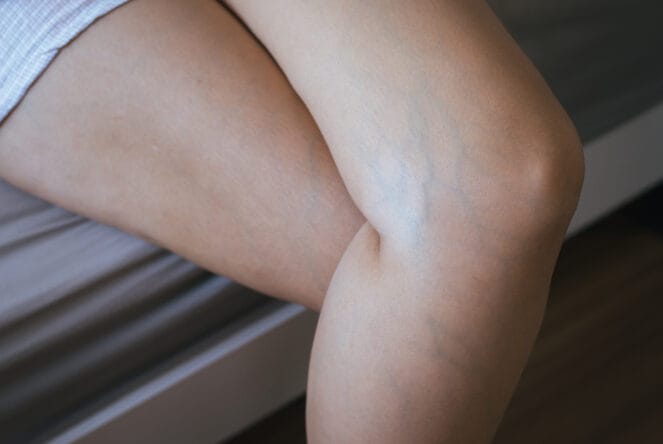Are Varicose Veins Dangerous?

If you’re one of the more than 20 percent of Americans living with varicose veins, you should know that those blue and purple bulges in your legs might be more than just an unsightly nuisance.
“Varicose veins form because the veins aren’t functioning correctly,” said Dr. Alissa Brotman-O’Neill, a surgeon at The Princeton Vascular Center in New Jersey. “Blood is traveling downward putting pressure on its branches, and then that pressure causes the vein to dilate.”
Women are twice as likely as men to develop varicose veins. And while many people will have no symptoms at all, others may suffer from pain, swelling, achiness or restless leg syndrome.
These veins usually occur in the legs and ankles, but they can form in other parts of the body.
ALSO READ: 14 Famous Older Women Who Much Younger Than They Are
“In our legs we have one-way valves,” said Brotman-O’Neill. “Because we stand upright, generally people get varicose veins in their legs because the veins in your legs have to work against gravity to get blood back to the heart.”
While varicose veins are quite common and can even be hereditary, there are some risks associated with letting them go untreated.
Brotman-O’Neill explained that we have what doctors call “feeder veins” which are veins that run throughout our bodies with lots of little branches. Blood in those veins usually always goes back to the heart, but in people with varicose veins, or a more serious condition called venous reflux, the blood flows in the wrong direction for a period of time causing the branches to dilate.
“The ultimate risk of having varicose veins is what we call venous disease and varicosities — is to have a venous ulcer,” said Brotman-O’Neill. “And that can be dangerous because it leads to non-healing wounds.”
Varicose veins that develop close to the surface of the skin can leave patients at risk for relatively significant bleeding if they are cut, Brotman-O’Neill added. These veins can also thrombose, or clot, which in severe cases, could increase the risk for a more serious condition called deep vein thrombosis (DVT), studies have shown.
But it’s not all doom and gloom; doctors can easily monitor and diagnose underlying conditions that are contributing to your varicose veins with an ultrasound.
“We can look at how dilated the vein is, whether there are clots in the vein,” said Brotman-O’Neill. “And also the flow within the vein — if it’s going in the wrong direction before it goes back to the heart.”
Explore More About:Health and Wellness
